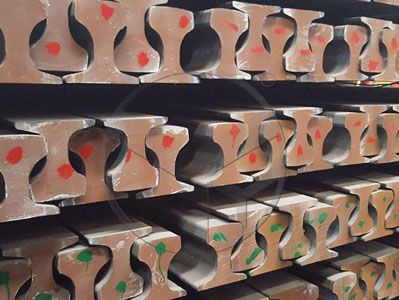How Much Do You Know About Crane Rails?
A crane rail is a specially designed track that is used to support and guide cranes and other heavy machinery. These tracks are made of high-quality steel and are designed to withstand the immense weight and pressure that cranes exert. Crane rails are used in a variety of industries, including construction, manufacturing, mining, and transportation.
The design of crane rails is critical to their effectiveness and durability. The tracks are designed to support the weight of the crane and the loads it carries, as well as to resist the lateral forces generated during the crane's movement. The tracks must also be designed to provide a smooth and stable surface for the crane to move along.
The most common types of crane rails are the I-beam and square bar designs. I-beam crane rails are named for their distinctive shape, which resembles the letter "I." These tracks are designed to support heavy loads and are used in applications where high strength is required. Square bar crane rails, on the other hand, are made of solid square bars and are commonly used in applications where moderate strength is required.
The size and weight of the crane rail are also essential factors to consider. The rails must be strong enough to support the weight of the crane and the loads it carries without deforming or bending. The size and weight of the rail are also essential factors to consider when determining the appropriate foundation for the rail. The foundation must be able to support the weight of the rail and the loads it carries.
The installation of crane rails is a complex process that requires specialized skills and equipment. The rail must be properly aligned and leveled to ensure that the crane moves smoothly and accurately. The rail must also be secured to the foundation with high-strength bolts or other fasteners to prevent movement or shifting during use.
One of the primary benefits of using a crane rail is that it provides a stable and reliable surface for cranes and other heavy machinery to move along. This can significantly improve the efficiency and safety of operations, as the crane can move more quickly and accurately, and the risk of accidents and equipment damage is reduced.
Another advantage of crane rails is that they can be customized to meet the specific needs of the application. For example, the rail can be designed to accommodate different types of cranes, such as overhead cranes or gantry cranes. The rail can also be designed to accommodate different types of loads and speeds, as well as different environmental conditions.
Proper maintenance of crane rails is essential to ensure their longevity and effectiveness. Regular inspection and cleaning of the rail can help to prevent the buildup of debris and other contaminants that can damage the surface of the rail. Any damage or defects in the rail should be repaired promptly to prevent further damage or accidents.
In addition to their use in supporting cranes, crane rails are also used in other applications, such as railway tracks and bridges. Crane rails used in railway applications must be designed to meet specific safety and regulatory standards, such as those set by the American Railway Engineering and Maintenance-of-Way Association (AREMA).
In bridge applications, crane rails are used to support and guide bridge cranes that are used for maintenance and repair work. Bridge crane rails are designed to be lightweight and durable, as they must support the weight of the crane and the loads it carries without adding significant weight to the bridge structure.
In summary, crane rails are critical components of many heavy machinery applications, providing a stable and reliable surface for cranes and other equipment to move along. The design and installation of crane rails must be carefully planned and executed to ensure their effectiveness and safety. Proper maintenance and inspection of the rail are also essential to ensure their longevity and performance. Crane rails are highly customizable and can be designed to meet the specific needs of the application, making them an essential part of many industrial and construction processes.
Related:


评论
发表评论